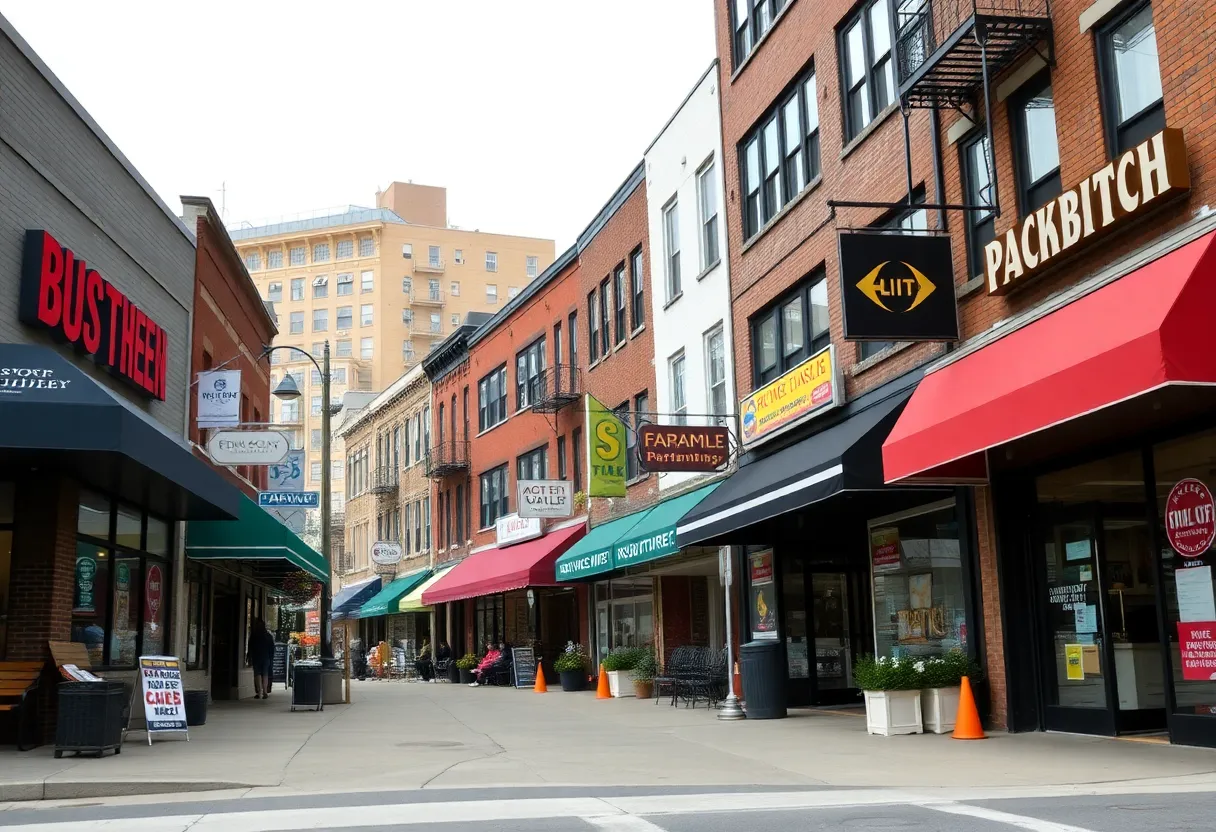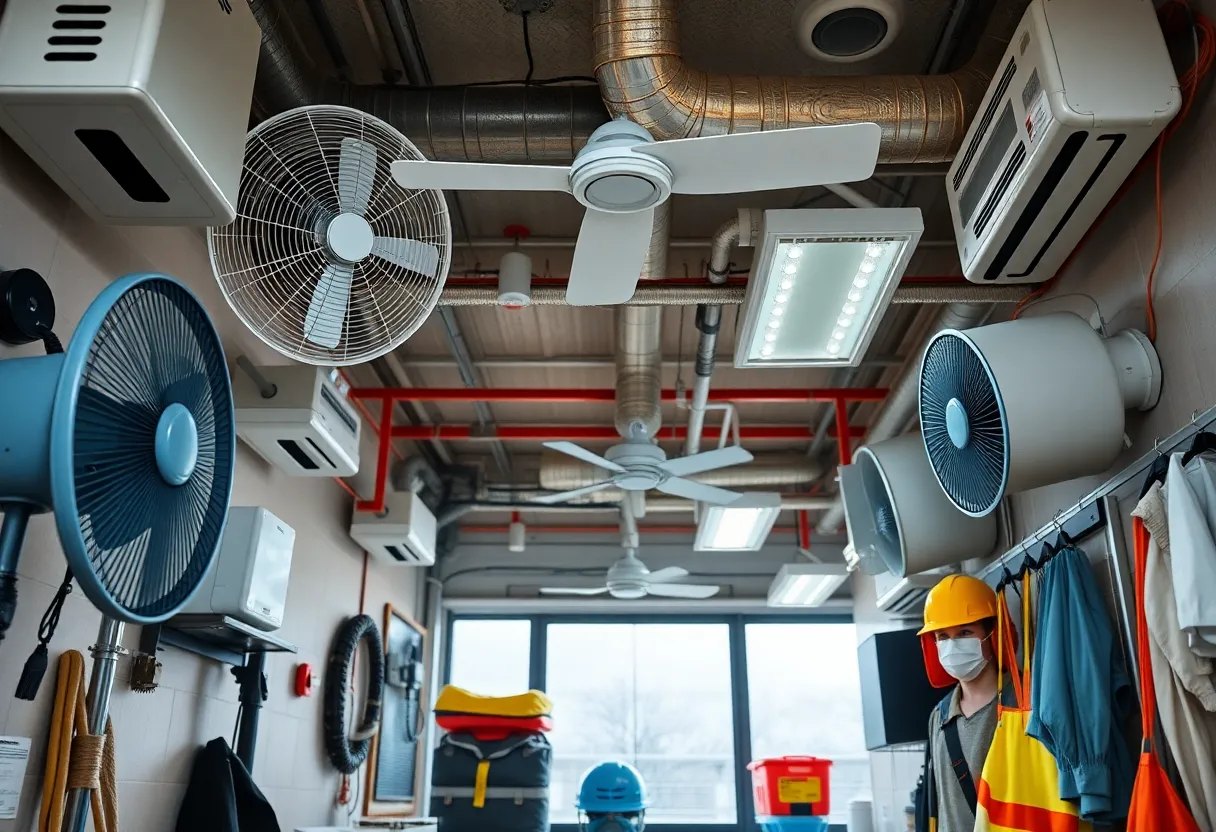News Summary
Businesses across the Northeast are grappling with new tariffs on imported goods, particularly affecting the restaurant and manufacturing sectors. The 10% tariff on Italian tomatoes has significantly squeezed profits for restaurants like Mama Santa’s and businesses reliant on exports. Companies are adopting various strategies, from raising prices to implementing bulk purchasing, as they navigate rising costs. While some sectors like aerospace remain resilient, many express concerns about the long-term impacts of the tariffs on consumer behavior and economic stability.
Northeast Businesses Struggle as New Tariffs on Imported Goods Strain Budgets and Consumer Behavior
Businesses across the Northeast are facing significant challenges due to new tariffs on imported goods, affecting various sectors like sauce manufacturing, retail, and tourism. The implementation of a 10% tariff on imported Italian tomatoes has particularly strained profits for companies dependent on these products.
Mark Bove, President of Bove’s, reports that despite rising costs, the company has chosen to absorb the increased expenses rather than pass them on to partners or customers. Bove emphasizes the importance of prioritizing employee welfare and maintaining strong partnerships during these economically uncertain times.
In New York’s North Country, businesses are seeing a significant income drop of 20-30% attributed to inflation and ongoing economic instability. The tourism sector is not immune, as revenue declines are affecting staffing and payroll obligations, as noted by representatives from the Regional Office of Sustainable Tourism.
The owner of Nuevo Modern Mexican and Tequila Bar highlights the challenge of balancing menu prices for tomato-heavy dishes due to escalating costs, while Mama Santa’s in Little Italy has raised menu prices for the first time in six years, fearing that higher prices may deter diners from eating out.
Similarly, some businesses in Northeast Ohio are responding to tariff-related price hikes by increasing prices, while others are holding firm for the time being. In Gardiner, a construction firm describes the impact of rising costs from partners and is focusing on maintaining long-term relationships to manage these challenges.
Manufacturers such as SSP Fittings Corp also report price increases attributed to tariffs on stainless steel, with plans in place to ensure financial stability during this tumultuous period. Jackson Comfort Services has observed a rise in the costs of raw materials and components, compelling the company to increase prices to safeguard profit margins.
In an effort to mitigate the impacts of rising costs, many businesses are adopting bulk purchasing strategies. Fully Promoted’s CEO notes that tariffs have led to price increases on various products ranging from 3% to 14%, adversely affecting already thin profit margins. The toll is particularly stark for items sourced from China, which make up a substantial portion of the company’s goods.
Additionally, customers are postponing large projects due to ongoing economic uncertainty, which is impacting planned growth for companies across the region. In contrast, Jergens Inc., a manufacturer of precision components, has benefited from U.S. demand that modulates competition from cheaper imports. With a diversified supply chain model that emphasizes domestic sourcing, Jergens aims to remain competitive amidst these challenges.
Despite the pressures imposed by recent tariffs, some business leaders express cautious optimism. There remains a steady demand in sectors such as aerospace and defense, which could offer a buffer against the ongoing economic turmoil.
While tariffs are positioned as a temporary strategy to bolster domestic manufacturing, the long-term effects on businesses and consumer behavior remain to be seen. Many companies express concern about navigating the uncertain economic landscape as they weigh their options and respond to rising costs associated with imports.
This complex situation presents a multitude of challenges for Northeast businesses, as they strive to balance pricing strategies, maintain profit margins, and sustain workforce commitments amidst fluctuating market dynamics. It remains to be seen how these evolving circumstances will shape the business environment moving forward.
Deeper Dive: News & Info About This Topic
HERE Resources
Additional Resources
- Cleveland 19: Tomato Prices Could Rise Following New Tariff
- Cleveland.com: Northeast Ohio Companies Brace for Ride on the Tariffs’ Rollercoaster
- Ainvest: Navigating Tariff Turbulence in Northeast Ohio
- Crain’s Cleveland: How Tariffs Impact Northeast Ohio Manufacturers
- Akron Beacon Journal: Tips to Survive Economic Turbulence for Akron Area Businesses
- Wikipedia: Tariffs
- Google Search: Northeast Ohio tariff impact
- Google Scholar: Tariffs impact on business
- Encyclopedia Britannica: Tariff
- Google News: Tariffs on imported goods








